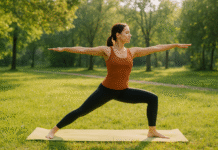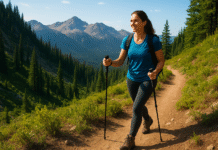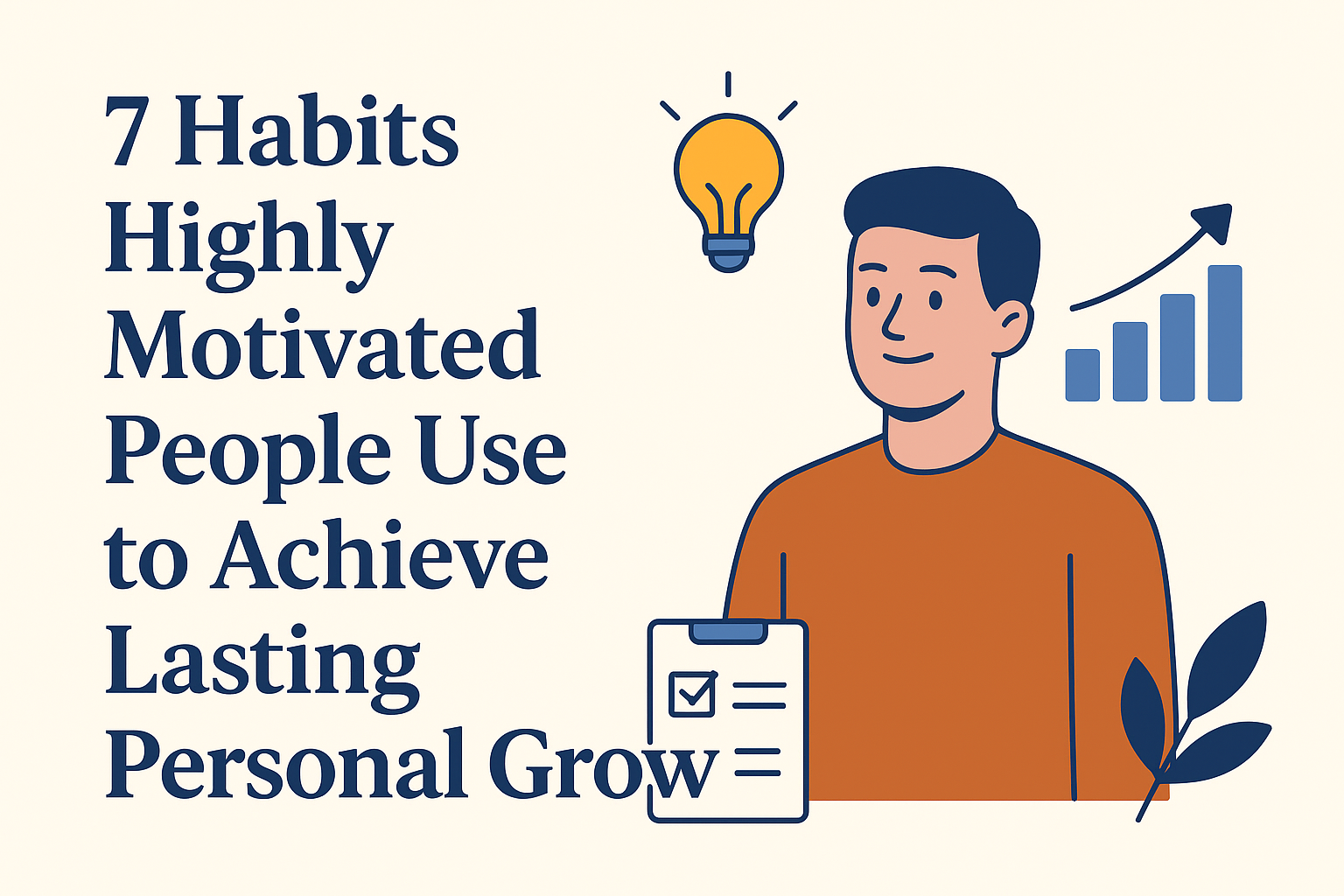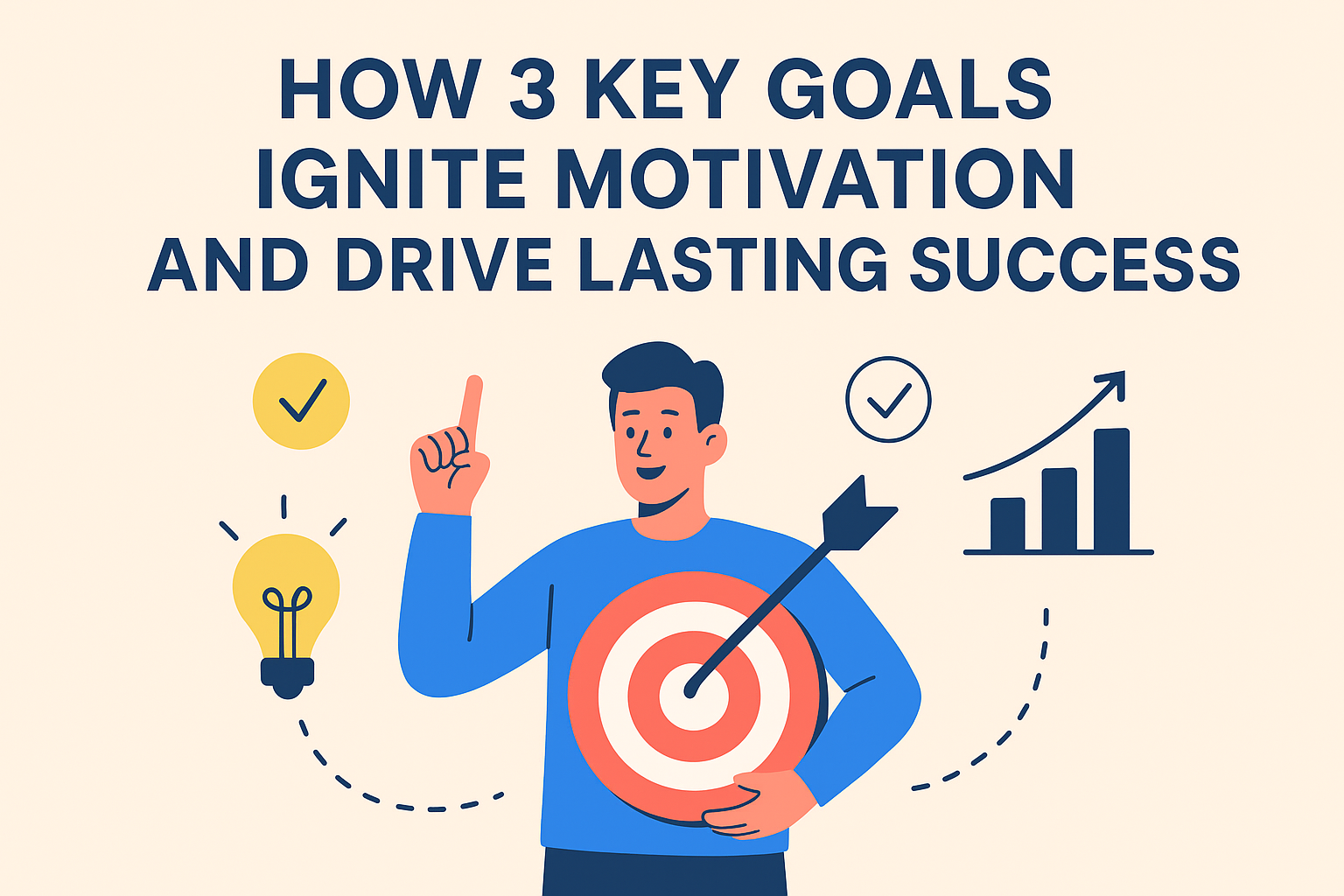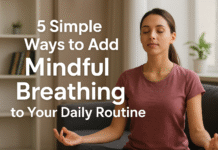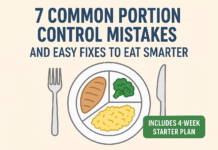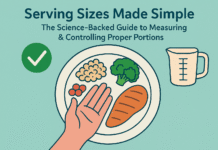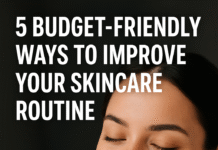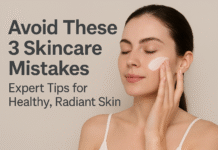If you want healthier, clearer skin without blowing your budget, you don’t need a shelf full of expensive serums or a monthly facial membership. This practical guide shows five inexpensive, high-impact strategies you can start using today to improve skin texture, reduce breakouts, protect against sun damage, and get more value from every product you buy. It’s written for everyday people who want results (busy schedules welcome), using straightforward steps, safety notes, and a realistic 4-week starter plan.
Quick note / medical disclaimer: this article gives general, non-prescriptive skincare guidance. If you have a medical skin condition (severe acne, eczema, rosacea, or a suspicious mole), see a licensed dermatologist or healthcare provider for tailored care.
Key takeaways
- Sunscreen daily is non-negotiable. Use a broad-spectrum SPF 30+ and reapply when outdoors every two hours.
- Simplify to the essentials: cleanse gently, moisturize, and protect — those three steps deliver most benefits and save money.
- Introduce actives slowly (retinol, acids); start low-frequency and patch test to avoid irritation.
- Drugstore basics work well. Affordable cleansers and moisturizers often contain the same helpful ingredients as pricier options.
- Measure progress: take photos, note skin texture and breakouts, and expect visible improvements in 4–12 weeks depending on the change you make.
A quick overview of the five budget-friendly approaches
- Buy fewer, better basics: invest in a gentle cleanser, a solid moisturizer (humectant + occlusive), and sunscreen.
- Use layered protection (sunscreen + smart clothing + timing): highest return on investment for aging and cancer prevention.
- Targeted, low-cost actives: OTC benzoyl peroxide or salicylic acid for breakouts; low-strength retinol for aging.
- Smart product habits: patch tests, proper application order, and conservative use of treatments to avoid waste and irritation.
- DIY-savvy, but evidence-based: simple home tactics (moisturize damp skin, double-duty products) instead of unproven “trendy” DIYs.
1) Buy fewer, better basics: the three products you actually need
What it is and core benefits
This approach pares your routine down to three essentials: a gentle cleanser, a moisturizer (with humectant + emollient/occlusive benefits), and daily sunscreen. This minimal kit removes dirt, locks in hydration, and prevents sun damage — the three pillars of healthy skin. Simpler routines lower cost, reduce irritation risk, and make consistent use more likely.
Requirements / low-cost alternatives
- Gentle cleanser: look for fragrance-free, sulfate-light formulas. Drugstore hydrating cleansers often work as well as pricier ones.
- Moisturizer: a product containing glycerin or hyaluronic acid (humectants) plus a cream or petrolatum/occlusive to seal in moisture; inexpensive jar creams or petroleum jelly are fine.
- Sunscreen: broad-spectrum SPF 30+; mineral or chemical options both acceptable. Affordable sunscreen options are widely available.
Estimated cost (monthly, budget): $5–$25 depending on brand choices.
Step-by-step (beginner-friendly)
- Morning: splash with lukewarm water or use a gentle cleanser if your skin feels oily; pat dry. Apply a thin layer of serum or moisturizer if used; finish with 1/4–1/2 teaspoon of SPF 30+ sunscreen for face/neck.
- Evening: remove makeup (if worn) with a micellar cloth or gentle oil, then cleanse. Pat dry and apply moisturizer while skin is damp to trap moisture.
Beginner modifications and progressions
- Simplify further: If you find even three products too much, prioritize sunscreen during the day and a moisturizer at night.
- Progression: Add a targeted serum (vitamin C morning, retinol at night) only after 4–6 weeks of consistent basics.
Recommended frequency/duration/metrics
- Cleanse: once in the morning and once at night (or morning splash + night cleanse).
- Moisturize: daily; immediately after showering or cleansing for best effect.
- Sunscreen: every morning and reapply every two hours when outdoors.
Safety, caveats, common mistakes
- Overwashing: scrubbing or harsh cleansers can strip oils and worsen dryness or oil rebound.
- Skipping patch tests: new moisturizers and cleansers can still cause irritation—test first.
Mini-plan (2–3 steps)
- AM: Cleanse (or splash) → Moisturize → SPF 30+ (face & neck).
- PM: Double-cleanse (makeup remover if needed) → gentle cleanser → moisturizer.
2) Make sunscreen your budget superstar: daily use, correct amount, reapply
What it is and core benefits
Sunscreen prevents sunburn, pigment changes, premature aging, and contributes to lowering skin-cancer risk. A low-cost tube used daily outperforms many expensive anti-aging serums in long-term benefits.
Requirements / low-cost alternatives
- Product: broad-spectrum SPF 30 or higher.
- Alternatives/boosters: hats, UPF clothing, shade, and scheduling outdoor time outside peak sun hours (10am–4pm) reduce UV exposure and decrease how much sunscreen you use.
Step-by-step instructions
- Morning application: after moisturizer but before makeup, apply sunscreen to all exposed skin. For face and neck, use roughly a nickel to a quarter-teaspoon (or the “two-finger” method) — be generous.
- Reapply: every two hours outdoors and immediately after swimming/sweating. If you’re mostly indoors and away from windows, a morning application is still helpful but reapplication is less critical.
Beginner modifications and progressions
- If sunscreen feels heavy: try a lightweight gel or fluid formulation labeled non-comedogenic. Apply and wait 3–5 minutes before makeup.
- If you forget reapplication: supplement with a wide-brim hat and shade until you can reapply.
Recommended frequency/duration/metrics
- Daily morning application. Reapply every 2 hours when outdoors or after swimming/sweating. For full-body application, most adults need about 1 ounce (a shot glass) to cover exposed skin.
Safety, caveats, common mistakes
- Too little sunscreen: most people apply well under the tested amount, reducing protection. Use the finger-method or measured dose to be sure. AllureLab Muffin Beauty Science
- DIY “natural” sunscreens: some homemade oils are not reliable UV protectants and can increase risk — stick with tested formulations.
Mini-plan (2 steps)
- AM: SPF 30+ applied to face, neck, ears, and exposed chest.
- If outdoors: reapply every two hours or use clothing/hat to reduce sun exposure.
3) Use targeted, low-cost actives correctly (salicylic acid, benzoyl peroxide, gentle retinol)
What it is and core benefits
A few inexpensive over-the-counter actives do heavy lifting: salicylic acid for clogged pores, benzoyl peroxide for acne-causing bacteria and inflammation, and low-concentration retinol for early anti-aging and cell turnover. Used correctly, they treat problems without needing expensive specialty serums.
Requirements / low-cost alternatives
- Salicylic acid: available as toners, washes, or spot treatments (0.5–2% in OTC products).
- Benzoyl peroxide: typically 2.5–10% gels/creams; start low to reduce dryness.
- Retinol: start with low concentrations and apply at night only; sample pea-size doses.
Step-by-step implementation
- Patch test: for any active, do a patch test for 7–10 days on inner forearm as described below.
- Introduce slowly: start salicylic/benzoyl peroxide once daily or every other day; retinol every 2–3 nights for first 2–4 weeks. Increase frequency slowly as tolerated.
- Moisturize and protect: always pair actives with moisturizer and daily sunscreen (retinoids increase photosensitivity).
Beginner modifications and progressions
- Acne-prone, sensitive skin: use spot treatments rather than all-over application; alternate benzoyl peroxide with salicylic acid nights.
- Progression: when skin tolerates nightly retinol, consider increasing concentration or frequency under guidance.
Recommended frequency/duration/metrics
- Benzoyl peroxide: typically once or twice daily on affected areas. Monitor for irritation; reduce frequency if too dry.
- Salicylic acid: can be used daily in low concentrations (washes or leave-on toners) for pore clearance.
- Retinol: begin every 2–3 nights and build to nightly or every-other-night as tolerated over several weeks.
Safety, caveats, common mistakes
- Mixing actives without care: avoid combining strong AHAs/BHAs + benzoyl peroxide + retinol all at once — that increases irritation risk. Stagger or alternate nights.
- Bleaching: benzoyl peroxide can bleach fabrics — use white towels or avoid contact with clothing.
Mini-plan (2–3 steps)
- For new acne: wash with gentle cleanser → apply benzoyl peroxide gel to spots in PM every other night → moisturize.
- For anti-aging starter: PM cleanse → pea-size retinol every 2–3 nights → moisturizer; use SPF daily.
4) Smart product habits that save money and skin
What it is and core benefits
Small behavioral shifts increase product effectiveness and reduce waste: patch testing, proper layering order, applying moisturizer to damp skin, and using multi-use products. These habits reduce reactions, make products last longer, and cut replacement costs.
Requirements / low-cost alternatives
- Patch testing: use the inside forearm or elbow crease; repeat twice daily for up to 7–10 days. This costs nothing and prevents buying expensive products that cause reactions.
- Layering basics: thin → thick (serums then moisturizers then sunscreen). Save expensive serums for targeted needs rather than blanket use.
Step-by-step instructions
- Patch test: apply a small amount where it won’t be disturbed; observe for redness/itching. Stop if reaction occurs.
- Apply in the right order: cleanse → treatment (thin serums/acids) → moisturizer → sunscreen (AM). At night, cleanse → retinol/treatment → moisturizer.
- Moisturize damp skin: apply moisturizer within a minute or two after patting skin dry to trap surface water. This simple trick makes moisturizers feel more effective and reduces the temptation to buy richer creams.
Beginner modifications and progressions
- If you have limited time: skip toners and multiple serums; use one targeted treatment and one moisturizer.
- Progression: once comfortable with habits, add specific actives as needed — but keep the order and spacing.
Recommended frequency/duration/metrics
- Patch test: at least 7 days for leave-on products, shorter for rinse-off products.
Safety, caveats, common mistakes
- Overlayering: putting too many products on at once increases cost and irritation risk. Keep it lean.
- Using expired products: creams and SPF lose effectiveness—check expiry and discard opened products beyond recommended shelf life.
Mini-plan (2 steps)
- One-week habit focus: each morning: cleanse → moisturizer on damp skin → SPF. Each night: cleanse → patch-tested treatment (if using) → moisturizer.
5) DIY, pantry-friendly hacks that actually help (and which to skip)
What it is and core benefits
Some home tricks are low-cost and effective: using petroleum jelly to seal moisture, applying plain glycerin or a basic humectant to dry patches, or simple oatmeal baths for soothing inflamed skin. Skip trendy, untested DIYs (raw lemon juice as bleach, undiluted essential oils on skin) that often irritate and cause long-term damage.
Requirements / low-cost alternatives
- Petroleum jelly (vaseline): inexpensive occlusive that prevents water loss when applied over damp skin.
- Oatmeal soak: plain colloidal oatmeal relieves itch and irritation.
- Avoid: raw citrus, vinegar, undiluted essential oils — they can cause burns or allergic reactions.
Step-by-step instructions
- Moisture lock: after shower, pat skin lightly then apply a thin layer of petroleum jelly to dry patches or lips. Use sparingly on face if prone to acne.
- Soothing compress: for irritated spots, mix cooled oatmeal into a paste, apply briefly, rinse.
- Spot cleanups: use diluted honey or a plain cotton pad + micellar water to remove makeup — cheaper than specialized wipes.
Beginner modifications and progressions
- For very dry skin: use petroleum jelly at night and a regular moisturizer during the day.
- If acne-prone: avoid heavy occlusives on the entire face; use in small zones only.
Recommended frequency/duration/metrics
- Petroleum use: nightly or as needed on particularly dry areas.
- Oatmeal bath: 1–2 times per week for irritation or dryness.
Safety, caveats, common mistakes
- Home “chemical peels”: don’t attempt high-strength acid peels at home; these risk burns. Use low-concentration OTC acids or see a professional.
Mini-plan (2 steps)
- Budget moisture boost: after shower, pat damp skin → apply moisturizer → for extra seal use a dime-sized petroleum jelly on very dry patches.
Practical add-ons
Quick-start checklist (one-page, print or screenshot)
- Gentle cleanser (fragrance-free) ✔
- Moisturizer with humectant (glycerin/hyaluronic) ✔
- Broad-spectrum SPF 30+ ✔
- A low-cost active (benzoyl peroxide 2.5% or salicylic 1–2%) if acne-prone ✔
- Petroleum jelly or simple occlusive for dry patches ✔
- Notebook or app to log progress ✔
Troubleshooting / common pitfalls
- Problem: New redness after starting retinol.
What to do: Stop for 48–72 hours, switch to every-other-night application, use more moisturizer, and ensure nightly use only. If severe, consult a dermatologist. - Problem: Sunscreen feels greasy / leaves white cast.
What to do: Try a gel/fluids formula, or a tinted mineral sunscreen. Consider a lower-weight SPF designed for the face. - Problem: Breakouts after adding a product.
What to do: Patch test, stop the new product, and reintroduce after a week; simplify routine to basics until skin calms.
How to measure progress or results
- Photos: take consistent “no-makeup” photos under similar lighting every 2 weeks.
- Journal: track days with breakouts, dryness, or sensitivity.
- Simple metrics: number of breakouts per week, skin tightness rating 1–10, and UV exposure days per week.
4-Week Starter Plan (budget-friendly)
Goal: build consistency, protect from sun, and test a single targeted active.
Week 1 — Foundation
- AM: Splash/cleanse → moisturizer on damp skin → SPF 30+.
- PM: Remove makeup (if any) → gentle cleanse → moisturizer.
- Daily: log one line about skin (oiliness, dryness, any irritation).
Week 2 — Protection + habit
- Same as Week 1, add reapplication considerations: carry a small SPF for midday reapply if outside more than 2 hours. Start patch testing any new active on your inner forearm for 7 days.
Week 3 — Introduce one active
- If acne-prone: add benzoyl peroxide spot treatment every other night. If worried about aging: add retinol every 3rd night (PM only). Keep moisturizer and SPF consistent.
Week 4 — Evaluate and adjust
- Assess photos and notes. If skin tolerates active, increase frequency slowly. If irritation, reduce frequency or stop and consult a clinician. Plan budget refill for the one product that delivered the most visible benefit.
FAQs (8–12 concise answers)
1. Can I skip moisturizer if I have oily skin?
No — oily skin still needs hydration. Use a lightweight, non-comedogenic moisturizer and apply to damp skin to improve feeling and reduce excess oil production.
2. How much sunscreen do I actually need for my face?
Aim for roughly a nickel-sized amount or use the two-finger method; most people underapply, which lowers real-world protection. Reapply every two hours when outdoors. Real Simple
3. Are drugstore products effective?
Yes. Many affordable cleansers and moisturizers contain the same beneficial ingredients as premium brands. Focus on ingredient function, not price.
4. How soon will I see results from retinol or benzoyl peroxide?
Benzoyl peroxide can reduce inflammation in days to weeks; retinol often needs 8–12 weeks for visible texture and fine-line changes. Start slow and be patient.
5. Can I use vitamin C in the morning and retinol at night?
Yes — that’s a common and effective pairing. Use sunscreen daily to protect results and avoid mixing these actives at the same time of day. Health
6. Is patch testing really necessary?
Yes — it’s an inexpensive, low-effort way to avoid buying products that cause allergic or irritant reactions. Test for 7–10 days for leave-on products.
7. How do I choose between salicylic acid and benzoyl peroxide?
Salicylic acid helps unclog pores (good for blackheads/whiteheads); benzoyl peroxide reduces bacteria and inflammation. For many people, alternating or combining spot treatments is effective.
8. Can I rely on “natural” oils (coconut/olive) for sunscreen or moisturizing?
While some oils moisturize, they are not reliable UV protectants. For sun protection, use tested SPF products. Some oils can also be comedogenic (pore-clogging) for certain skin types. The Washington Post
9. How often should I exfoliate on a budget?
Start with gentle chemical exfoliation (BHA/AHA) once or twice weekly; avoid harsh scrubs and over-exfoliation. Monitor skin and adjust. Healthline
10. Are multi-use products worth it?
Yes. A moisturizer with SPF or a combined makeup + SPF product can save money and simplify your routine—just ensure SPF efficacy and reapply when needed.
11. What should I prioritize if I can only afford one thing?
Buy a broad-spectrum SPF 30+ and use it daily. If you already use sunscreen, the next best investment is a gentle moisturizer.
12. How do I store products to extend their life?
Keep products in a cool, dry place out of direct sunlight. Close caps tightly and check expiry dates; discard if texture or smell changes.
Conclusion
Improving your skincare routine on a budget is less about buying the newest products and more about consistent, smart choices: protect your skin with sunscreen, keep it clean and hydrated, introduce proven actives carefully, and adopt habits that maximize product value. Small, steady steps over 4–12 weeks produce visible, lasting results — and cost far less than chasing every new launch.
Ready to get started? Pick one of the five strategies above and try it for four weeks.
References
- How to apply sunscreen — American Academy of Dermatology, Last updated: May 1, 2025. . American Academy of Dermatology
- Face washing 101 — American Academy of Dermatology, (accessed Aug 10, 2025). . American Academy of Dermatology
- Retinol: Cream, Serum, What It Is, Benefits, How To Use — Cleveland Clinic, (accessed Aug 10, 2025). . Cleveland Clinic
- Mayo Clinic Minute: Moisturizer tips from a dermatologist — Mayo Clinic, (accessed Aug 10, 2025). . Mayo Clinic
- Acne — Treatment — NHS, (accessed Aug 10, 2025). . nhs.uk
- How to perform a patch test for skincare products — Medical News Today, (accessed Aug 10, 2025). . Medical News Today
- Skin care on a budget — American Academy of Dermatology, (accessed Aug 10, 2025). . American Academy of Dermatology
- Emollients: Creams, Soaps, Moisturizers, Ointments, Benefits — Cleveland Clinic, (accessed Aug 10, 2025). . Cleveland Clinic
- What Are Emollients, Humectants, and Occlusives? — CeraVe (brand educational content), (accessed Aug 10, 2025). . CeraVe
- Common questions about benzoyl peroxide — NHS, (accessed Aug 10, 2025). . nhs.uk
- Patch Test Guide — The Ordinary (brand guidance), (accessed Aug 10, 2025). . The Ordinary
- Dermatology Patients’ Knowledge of Sunscreen Guidelines at a … (study) — NIH / PubMed Central (discussion of sunscreen volumes and application studies), (accessed Aug 10, 2025). . PMC


